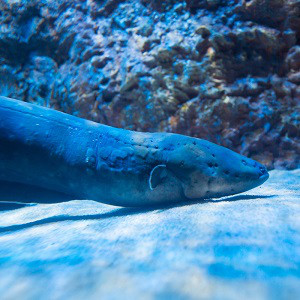
The origins of electromedicine, of which frequency therapy is a part, can be found with the ancient Egyptians.
They used the electricity of the electric eel (Electrophorus electricus) to treat pain, as a so-called "analgesic", and achieved amazing success with it.
According to tradition, as early as 2,750 BC, patients suffering from pain were exposed to electric shocks from electric eels.
The patients had to stand with both bare feet on the fixed electric eel, which was in a stress or defensive posture and thus produced a current of high strength.
Electric shocks now permanently flowed through the patient's extremities via the bare feet. The application was carried out until the legs became numb and the sensation of pain diminished.
When the Romans conquered the Egyptian empire in 31 B.C., the Egyptians' medicine also came into their possession.
The Roman physician Seribonius Largus was the first to describe electrothera-peutic measures using electric eels in 46 AD.
The Romans used electromedicine mainly for headaches and gout. Subsequently, this method was refined and can be found in historical sources as a successful pain therapy in Roman medicine.
Unfortunately, in the turmoil of the Middle Ages, this form of electrotherapy was lost for many centuries.
It was not until 1747 that an Italian professor succeeded in following up on the electromedical healing successes of the Romans.
He placed a metal bracket on the paralysed arm of a blacksmith and sent the electric shocks of the electric eel into the patient's arm. According to reports, the paralysed arm of the blacksmith's master was conditionally functional again after a few therapies.
Based on a travel description from 1761, the electric eel was also used in South America by the Indians as a treatment method for paralysis symptoms.
Electric eels have electrical organs, with whose weak electrical fields the animals orientate themselves and communicate with each other, but with which they can also emit strong electrical shocks with voltages of up to 500 volts.
Most of the electric eel's body surface is covered with electrical organs. They are actually remodelled muscles that can release these high voltages.
Each organ consists of a large number of current-generating elements, each of which produces only a small voltage.
In an electric eel, the approximately 5,000 to 6,000 electrocytes can together generate a voltage of up to 500 volts at a current of 0.83 amperes and thus a power of 415 watts.
Thus - to put it simply - the fish body is like an accumulator.
Acids are formed in the muscles, whose platelets are overlaid thousands of times. They transport electrons from muscle to muscle. This creates a current that charges the muscle accumulator.
The term "bioelectricity" was later coined for this type of electrical energy.
